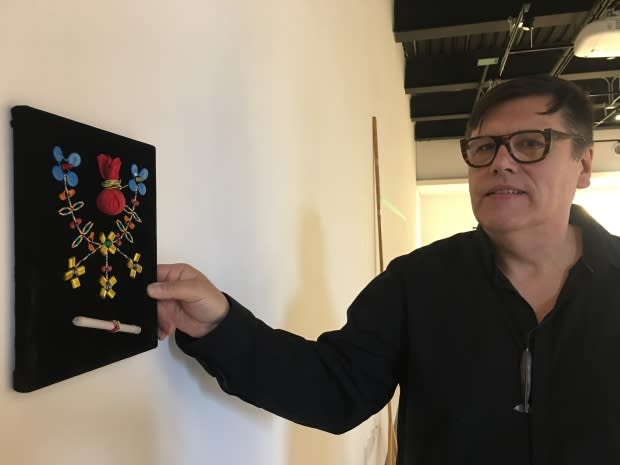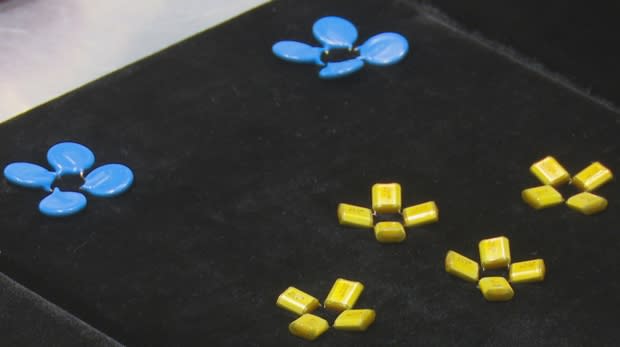Contemporary Wampum belt by UWindsor artist-in-residence 'carries a strong message'
A first-of-its-kind Indigenous artist-in-residence project will see collaboration with creative arts and law students to create a contemporary Wampum belt as part of a Truth and Reconciliation project.
Barry Ace, a band member of M'Chigeeng First Nation, is the artist-in-residence.
There will be 94 students, helping to create and build a 54-panel art piece, resembling a contemporary Wampum belt. It will also have calls for action, which came out of the Truth and Reconciliation Commission (TRC), embedded in the piece. The TRC examined the residential school experiences across Canada.
"Work together and have an opportunity, not only to examine and look at the reconciliation calls to action, but also talk about them and try to come up with an understanding of what spawned these particular calls to action and help us all move forward collectively from this traumatic history," Ace said.
Each student will get one call to action, which they will write on a piece of paper and attach to a panel. They will also help finish the beading work on the panels.

"For the law students it's interesting because it talks about federal responsibilities, provincial responsibilities and municipal responsibilities," Ace said.
"For the art students it's interesting, in the fact that, how do you take this very, very complex legal document and transfer that into a visual, mnemonic work of art."
Another aspect of the piece involves the history of treaties. Every participant has to sign a contract. They will each be paid $1 by Ace, and receiving that dollar will surrender their rights to the work.
"This exchange that took place, it gets people to start thinking about what that involves, in terms of surrender of land, surrender of territory, surrender of rights," he said.
Ace said treaties are viewed differently in Indigenous communities and non-Indigenous communities.

"Indigenous people don't look at it like a surrender," he said. "It was a mutual sharing of land and still have independence and autonomy. Whereas the settler perspective is very different."
Students will be able to work on the pieces until Friday. The public can join in on Friday at the Alan Wildeman Centre for Creative Arts between 9 a.m. and 4 p.m.
The artwork will be on display at the School of Creative Arts Armouries Gallery from Nov. 19 to Nov. 23.
Although there is a lot of work to be done, Ace isn't worried about making the deadline.
"When you look at the Truth and Reconciliation implementation, only 10 of the 94 calls to action have been implemented," he said.
"So I think no matter whether the work is completed or not, it carries a strong message. It just shows that we have a lot of work left to do in this country."

